Blog
Platform and Industry updates
-

11/12/2025
New York Elections
November in the USA means Thanksgiving, Black Friday, Veterans Day, baseball (yes, really – ten World Series since 2000 have ended in November, including the most recent edition, when the LA Dodgers triumphed over the Toronto Blue Jays in game 7 on November 1st) – and elections.
Last year was the big one, of course – the Presidential election. But this year, while certainly nowhere near as high profile, the New York mayoral election and the Virgina and New Jersey gubernatorial elections each commanded significant column inches in the news media – and plenty on social media platforms as well.
It’s the New York election that has most in the US private funds space talking. Democratic candidate and NYC mayor-elect Zohran Mamdani has said that he would increase taxes on the wealthiest New Yorkers to fund some of his policies, which in turn have led many commentators to predict an exodus of talent from the Big Apple to more ‘tax-friendly’ states.
If said migration were to happen, it wouldn’t be a new trend. Back in 2023, a Bloomberg article suggested that approximately $1trn worth of assets had left New York and California for pastures new, which means, other things being equal, less tax receipts for those states as a result.
That’s corporations, of course, not people (at least, not directly). But there is evidence to suggest that the finance industry in New York is shrinking in terms of the percentage of inhabitants that work in it: Just 7.7% this past August, according to The Economist. Part of the reason will be slower growth in the number of jobs in New York’s finance industry, and part will be higher growth in other cities, relocating some existing workers.
The extent to which New Yorkers do or don’t leave the city during Mamdani’s term is difficult to predict. Firstly, certain tax rises in the Empire state require state senate and/or governor approval – which does not appear to be guaranteed as incumbent NY governor Kathy Hochul told the Raging Moderates podcast recently that she was “concerned about outmigration of people who are the ones who are supporting our budget.”
Second is the fact that just because a private fund adviser leaves a state doesn’t mean that the workers will. The emergence and stickiness of remote work in the aftermath of the Covid-19 pandemic means that a company can relocate to a state where corporation tax is lower, but its employees can still work from where they currently live.
Which leads into something we can measure – whether private fund advisers do indeed jump ship in the near future. The vast majority of private fund advisers in the US file their annual Form ADV in the first quarter of the calendar year because the deadline for doing so is 90 days after the end of their financial year – which, for most, is December 31st.
Which means that in early April, we will be able to see which advisers do move between now and the end of the year.
That’s a short window, however. And plenty might want to play a game of wait-and-see, given the aforementioned apparent hesitance of the governor to support tax increases.
And even with political will, New York’s legislative machinery isn’t built for sudden tax shifts. Any new city income tax on high earners would almost certainly need to be negotiated as part of the 2026 state budget cycle, meaning that the soonest New Yorkers would see such a change would likely be mid- to late-2026.
That means the true extent to which private fund advisers and their employees leave New York – or not – won’t be known until April 2027. While anecdotal evidence will emerge before then, those bigwigs in the New York alternative investment space who want to remain there will no doubt be hoping that Governor Hochul’s apparent hesitancy to agree to tax hikes turns out to be a very real roadblock.Editor's Picks:
Here are a handful of articles that we’ve seen recently that we found interesting. Hopefully, you do, too!
- How Short Sellers Are Surviving a Crazy Bull Market — While Waiting for It to End
- Fitch raises red flag on private credit’s bets in overheated services sectors
- A Look at the US Private Equity Market in Q3 2025
- 2025 U.S. Real Estate Market Outlook Midyear Review
- Venture capital is not an asset class, says Sequoia’s Roelof Botha
-
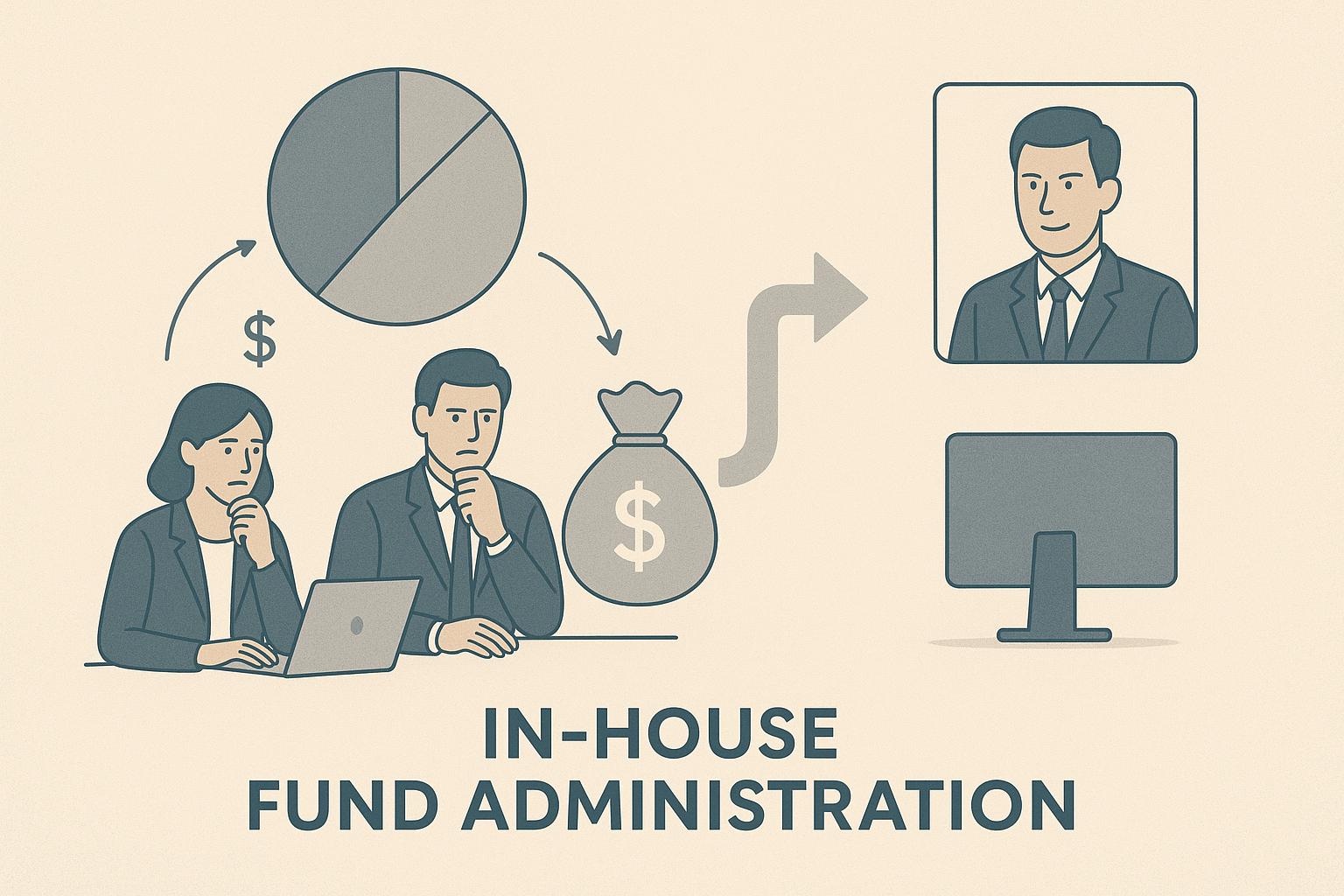
10/14/2025
There are Still Plenty of Self-Administering Private Funds – and It’s Not Just the Start-Ups
Institutional investors tend to prefer allocating to private funds that hire external fund administrators. A third-party provider adds independence, reduces conflicts of interest, and provides an extra layer of oversight and assurance. Yet despite the fact that it would seem obvious to fund managers to tick this particular client preference box, some funds still choose to self-administer.
It’s not as crazy as it sounds. For smaller or more specialized managers, outsourcing may feel disproportionate to their size and cost base. Others may value the control, flexibility, and confidentiality of in-house administration, especially when they think that they have the right expertise in-house.
So, this month, we took a look at the 9AT database to see just how prevalent self-administered funds are. To be clear, we looked only at advisers that listed no fund admins at all on any of their funds – some advisers had funds where they did list the admin, and some where they didn’t – because we were more curious about the corner of the market that seems to eschew the independent fund administrator entirely.
The extent of the prevalence depends largely on your point of view.
There were, at the end of September, 3,229 private fund advisers that listed no fund administrator on any of their collective 20,020 funds. That compares to 14,498 private fund advisers and an aggregate 125,911 funds in the total private funds’ universe. Again, to emphasize, we are looking only at advisers which have no externally administered funds – there are some advisers that have both internally and externally administered vehicles. But using our methodology, we can say that 22.3% of all advisers do not have an external administrator, and at least 15.9% of all funds are internally administered (and plenty more when including funds from managers that have admins listed on some funds).
That’s higher than we thought it might be. But what is less surprising, perhaps, is how this all shakes out at the category level. There are 10 times more private equity funds than hedge funds that self-administer, and approximately 8.5 times more self-administered venture capital funds than hedge funds (Table 1 below).
Table 1: Funds of Firms With no Listed Administrator, by TypeFund Category Quantity Private Equity 8,434 Venture Capital 6,832 Real Estate Fund 2,272 Other 1,615 Hedge Fund 810 Securitized Asset Fund 51 That data doesn’t tell the whole story, of course, because there are approximately twice as many private equity funds as hedge funds and 1.5 times as many venture capital funds as hedge funds, so the raw numbers for those categories. But the general trend of greater use of hedge funds being more common users of external fund administrators is likely a surprise to no-one due to higher trading volumes, more complex investment strategies, the need for more frequent valuations due to daily or monthly price changes, and the more frequent investor subscriptions and redemptions. Accurate and independent NAV calculations are clearly more critical here.
By contrast, private equity and venture capital funds are generally closed-end vehicles with long investment horizons. Capital is usually committed up front and called down over time, valuations are performed quarterly, semi-annually or even annually, and they rely more heavily on manager judgment since portfolio companies are illiquid and not publicly traded. In this environment, investors are more accepting of internal administration, provided the manager has robust processes in place.
What is also interesting is what the self-admin market looks like. Approximately one third are under $10mn in Total Private Fund GAV and more than two-thirds - 70% manage less than 5 funds.
But there are some big guns that have shown – are showing? – that becoming an alternative investment behemoth is entirely possible without the support that an external administrator provides.
The top three self- administering firms by Total Private Fund gross asset value are shown in Table 2 below and they are all ‘household’ names in the private markets industry.
Table 2: Top Three Self-Administering Private Fund Advisors
Fund Category Category Quantity Hines Capital Advisors Real Estate $465B Warburg Pincus Private Equity $148B Andreesen Horowitz Private Equity and Venture Capital $83B What will be interesting is to see if any of the firms that currently self-administer end up changing their mind by this time next year (and which administrators they hire if they do). And it will also be interesting to see whether or not these numbers will be higher or lower in aggregate; if you read the news media, you’ll be told that the general trend would seem to be towards outsourcing to an external fund administrator but we’re wondering if the ever-increasing costs of launching a private fund sponsor might mitigate or even negate that trend.
Editor's Picks:
Here are a handful of articles that we’ve seen recently that we found interesting. Hopefully, you do, too!
-
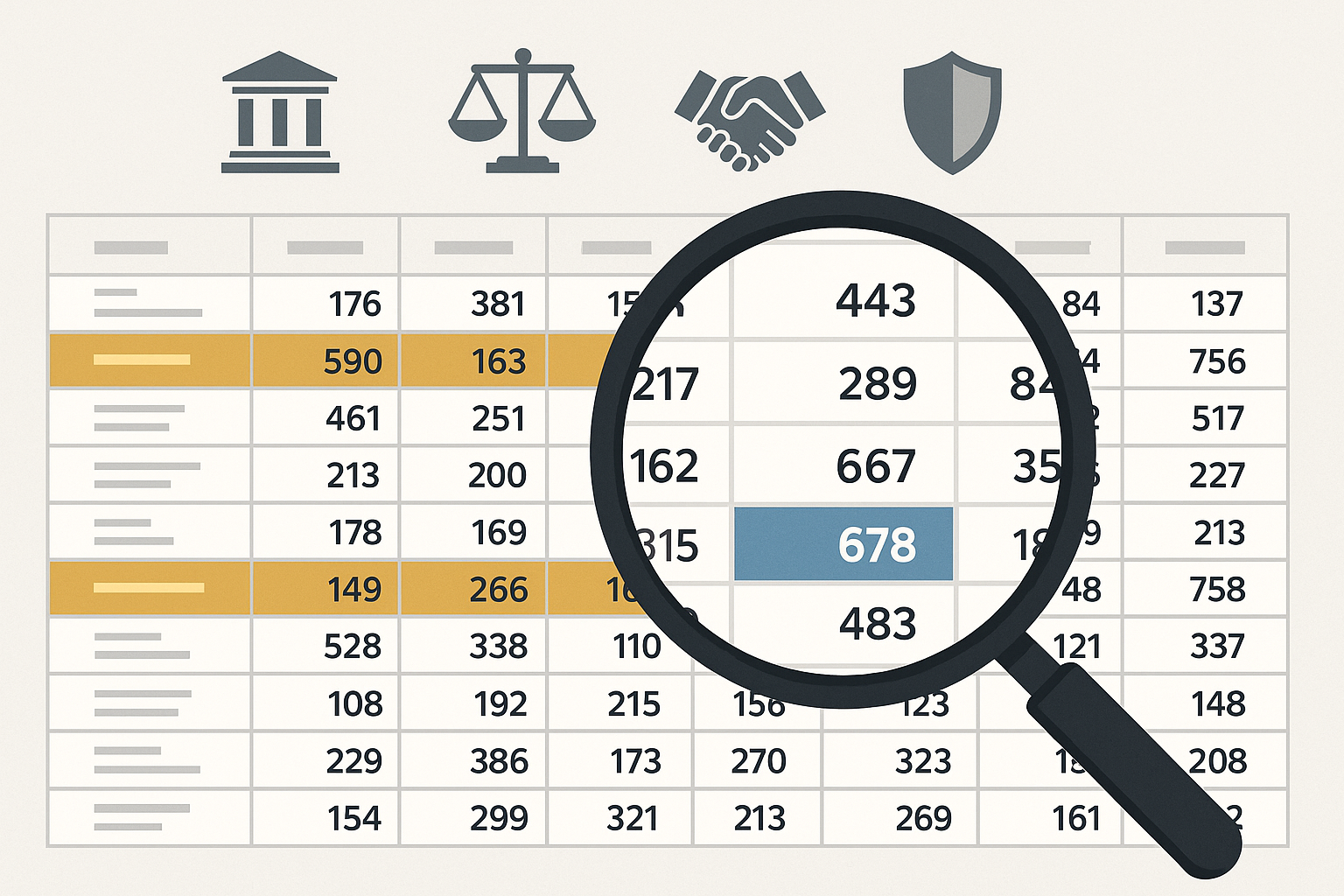
09/19/2025
Private Fund Service Provider League Tables Shows Further Hints of Change
Do you want to know which service providers have been hired to support the new private funds launched in the past year or so? After all, some of them may turn into the next billion-dollar hedge, private equity or real estate fund.
So do we. We took a look at the 9AT database to produce something of an update to last year’s version of this endeavor.
At the same time, we dug into at the overall picture, to try and understand which firms dominated their category – or not. Form ADV asks private fund sponsors to list the auditors, custodians, fund administrators and prime brokers.
Here is what we found...
Auditors
Last year, EY, Deloitte, PwC, KPMG and BDO were the five most common auditors hired by new funds (based on the aggregate gross asset value (GAV) of the funds). It’s the same story this year, albeit in a different order, and the five firms also provide the top five auditors for all funds (new and existing) at both year-end last year, and on September 1st this year (table 2).
Looking slightly beyond the top five is where it starts to get a little more interesting, however. On the surface, it appears that both RSM and Grant Thornton came very close to dislodging BDO from fifth spot overall – see Table 2b below. The interesting observation is, however, that in the past eight months, BDO has increased its GAV under audit.
Table 1: Top Five Fund Auditors of New Funds Identified from 2025 Form ADV Filings, Jan-Aug, sorted by GAV
Ranking Auditor GAV ($bn) Advisers Funds 1 PwC $603.6 324 1,181 2 EY $559.6 387 1,611 3 KPMG $312.5 346 974 4 Deloitte $214.4 274 947 5 BDO $39.2 105 282 Table 2: Top Five Auditors of All Funds Identified from latest Form ADV Filings, as of Aug 31, 2025
Ranking Auditor Funds GAV- Current ($bn) Funds GAV- YE2024 ($bn) % Market Share- Current % Market Share- YE2024 1 EY $ 9,902 $ 9,339 32% 31% 2 PWC $ 8,115 $ 7,678 26% 26% 3 KPMG $ 5,115 $ 5,186 16% 17% 4 Deloitte $ 4,873 $ 4,564 16% 15% 5 BDO $ 581 $ 508 2% 2% Table 2b: Auditors of All Funds Identified from latest Form ADV Filings, as of Aug 31, 2025, Positions Five-Seven
Ranking Auditor Funds GAV- Current Funds GAV- YE2024 5 BDO $ 581,311,904,525 $ 508,075,734,589 6 RSM $ 568,147,874,719 $ 537,680,072,634 7 Grant Thornton $ 566,585,408,966 $ 571,847,495,076 Custodians
There is an interesting observation in the new funds’ cohort of the custodian category, regardless of whether you sort the league table by aggregate GAV or the total number of funds services.
In the former method, Credit Agricole is not only a new entry but indeed it leads the way. Its $388.9bn of funds comes from just 24 advisers and 69 funds, however, as can be seen in Table 4a. If you dig deeper into those funds, the outlier is a $372bn Luxembourg-domiciled hedge fund managed by PGIM, which essentially put Credit Agricole in first position.
Sorting on the number of funds, however, shows Credit Agricole exit the top five altogether, and a new name, First Citizens Bancshares, coming in at number 2 (table 4b).
Overall, Morgan Stanley enters the top five at number five but keep an eye out – every firm in the top five has gained assets since the end of 2024 (table 5). No-one ever got fired for buying IBM, after all.
Table 4a: Top Five Fund Custodians of New Funds Identified from 2025 Form ADV Filings, Jan-Aug, sorted by GAV
Ranking Custodian GAV ($bn) Advisers Funds 1 Credit Agricole $388.9 24 69 2 J.P. Morgan $345.1 559 1,923 3 Bank of New York Mellon $251.0 196 811 4 Bank of America $226.1 208 723 5 Citigroup $147.4 135 376 Table 4b: Top Five Fund Custodians of New Funds Identified from 2025 Form ADV Filings, Jan-Aug, sorted by Fund Count
Ranking Custodian GAV ($bn) Advisers Funds 1 J.P. Morgan $345.1 559 1,923 2 First Citizens Bancshares $96.7 313 1,023 3 Bank of New York Mellon $251.0 196 811 4 Bank of America $226.1 208 723 5 US Bancorp $127.9 152 408 Table 5: Top Five Custodians of All Funds Identified from latest Form ADV Filings, as of Aug 31, 2025
Ranking Custodian Funds GAV- Current ($bn) Funds GAV- YE2024 ($bn) % Market Share- Current % Market Share- YE2024 1 J.P. Morgan $ 13,078 $ 11,881 11% 11% 2 Bank of America $ 10,257 $ 9,205 8% 8% 3 Bank of New York Mellon $ 9,681 $ 8,951 8% 8% 4 Citigroup $ 7,030 $ 6,507 6% 6% 5 Morgan Stanley $ 6,740 $ 5,589 6% 5% Prime Brokers
Same old, same old for the prime broker set. Last year, JP Morgan, Barclays, Citi, Morgan Stanley and Goldman Sachs took the top five slots for new funds, and the quintet do so again this year – albeit in a different order (table 6a).
Sorting by fund count tells a different story, however. Interactive Brokers comes in at number two (table 6b). Its 175 funds account for only $15bn in GAV, indicating a strong presence in the small and emerging manager category.
Citigroup featured in the top five new funds league table both last year and this year, but does not in the overall list – yet. It sits sixth, around $1.2 trillion short of Bank of America.
Table 6a: Top Five Fund Prime Brokers of New Hedge Funds Identified from 2025 Form ADV Filings, Jan-Aug, sorted by GAV
Ranking Prime Broker GAV ($bn) Advisers Funds 1 Morgan Stanley $127.6 123 198 2 J.P. Morgan $119.5 86 124 3 Goldman Sachs $94.4 101 154 4 Barclays $76.4 22 33 5 Citigroup $75.2 22 32 Table 6b: Top Five Fund Prime Brokers of New Hedge Funds Identified from 2025 Form ADV Filings, Jan-Aug, sorted by Fund Count
Ranking Prime Broker GAV ($bn) Advisers Funds 1 Morgan Stanley $127.6 123 198 2 Interactive Brokers $15.0 156 175 3 Goldman Sachs $94.4 101 154 4 J.P. Morgan $119.5 86 124 5 Bank of America $72.1 48 84 Table 7: Top Five Prime Brokers of All Hedge Funds Identified from latest Form ADV Filings, as of Aug 31, 2025
Ranking Prime Broker Funds GAV- Current ($bn) Funds GAV- YE2024 ($bn) % Market Share- Current % Market Share- YE2024 1 J.P. Morgan $ 7,589 $ 6,626 11% 11% 2 Morgan Stanley $ 7,427 $ 6,227 11% 11% 3 Goldman Sachs $ 7,162 $ 6,453 10% 11% 4 Barclays $ 6,506 $ 5,359 9% 9% 5 Bank of America $ 6,418 $ 5,368 9% 9% Administrators
Are we saving the most interesting category for last? After all, last year, data from the 9AT database showed that the admin category is the one where the firms atop the leaderboard have the smallest market share when compared to their audit, custody and prime broker peers, indicating a much more fractured and competitive market.
We are. In the new funds category, change is afoot. While CITCO and SS&C Technologies top the leaderboard (after coming in fourth and fifth in last year’s new funds table), when sorting by GAV, three new names appear this time: SEI Investments, Apex Group and Hedgeserv.
When sorting by fund count, however, Carta, which began life helping startups manage their cap tables, and has since built a fund administration service, takes the top spot. One to keep an eye on in future updates to this article, apparently.
Still, they have a way to go to break into the top five overall – which Apex has done this year, dislodging Bank of New York Mellon. The top four from last year – SS&C Technologies, Citco, State Street and Northern Trust – remain this year, in that very same order.
Table 8a: Top Five Fund Administrators of New Funds Identified from 2025 Form ADV Filings, Jan-Aug, sorted by GAV
Ranking Administrator GAV ($bn) Advisers Funds 1 CITCO $503.1 108 307 2 SS&C Technologies $109.5 204 490 3 SEI Investments $93.1 59 390 4 Apex Group $73.5 175 412 5 HedgeServ $59.0 34 91 Table 8b: Top Five Fund Administrators of New Funds Identified from 2025 Form ADV Filings, Jan-Aug, sorted by Fund Count
Ranking Administrator GAV ($bn) Advisers Funds 1 Carta $8.0 208 541 2 SS&C Technologies $109.5 204 490 3 NAV Consulting $24.1 257 424 4 Apex Group $73.5 175 412 5 SEI Investments $93.1 59 390 Table 9: Top Five Fund Administrators of All Funds Identified from latest Form ADV Filings, as of Aug 31, 2025
Ranking Administrator Funds GAV- Current ($bn) Funds GAV- YE2024 ($bn) % Market Share- Current % Market Share- YE2024 1 SS&C Technologies $ 4,110 $ 3,895 15% 15% 2 CITCO $ 3,960 $ 3,075 15% 12% 3 State Street $ 1,987 $ 2,209 7% 9% 4 Northern Trust $ 1,788 $ 1,643 7% 6% 5 Apex Group $ 1,429 $ 1,349 5% 5% It is well worth noting that these league tables look across all fund categories, lumping together hedge, PE, and VC into one broad brushstroke. Breaking up the data by different parameters- such as fund type, size, domicile, etc.- yields even more interesting findings. Users of our database can use our League Table page to dig even deeper to see rankings within various combinations of parameters.
We’ll likely revisit these league tables again at some point – while most of the names on these lists will be unsurprising to many, some most certainly will be, and it will be interesting to see how some of the challenger firms fare over the next 12 months and beyond.
Editor's Picks:
Here are a handful of articles that we’ve seen recently that we found interesting. Hopefully, you do, too!
- Hedge funds still cautious on U.S. stocks going into fragile September
- Private credit regulators more permissive despite growing credit risk
- Private Equity Megadeals Closing In on Record Year
- Manhattan office leasing on track to hit highest volume since 2019
- US and Indian VCs just formed a $1B+ alliance to fund India’s deep tech startups
-
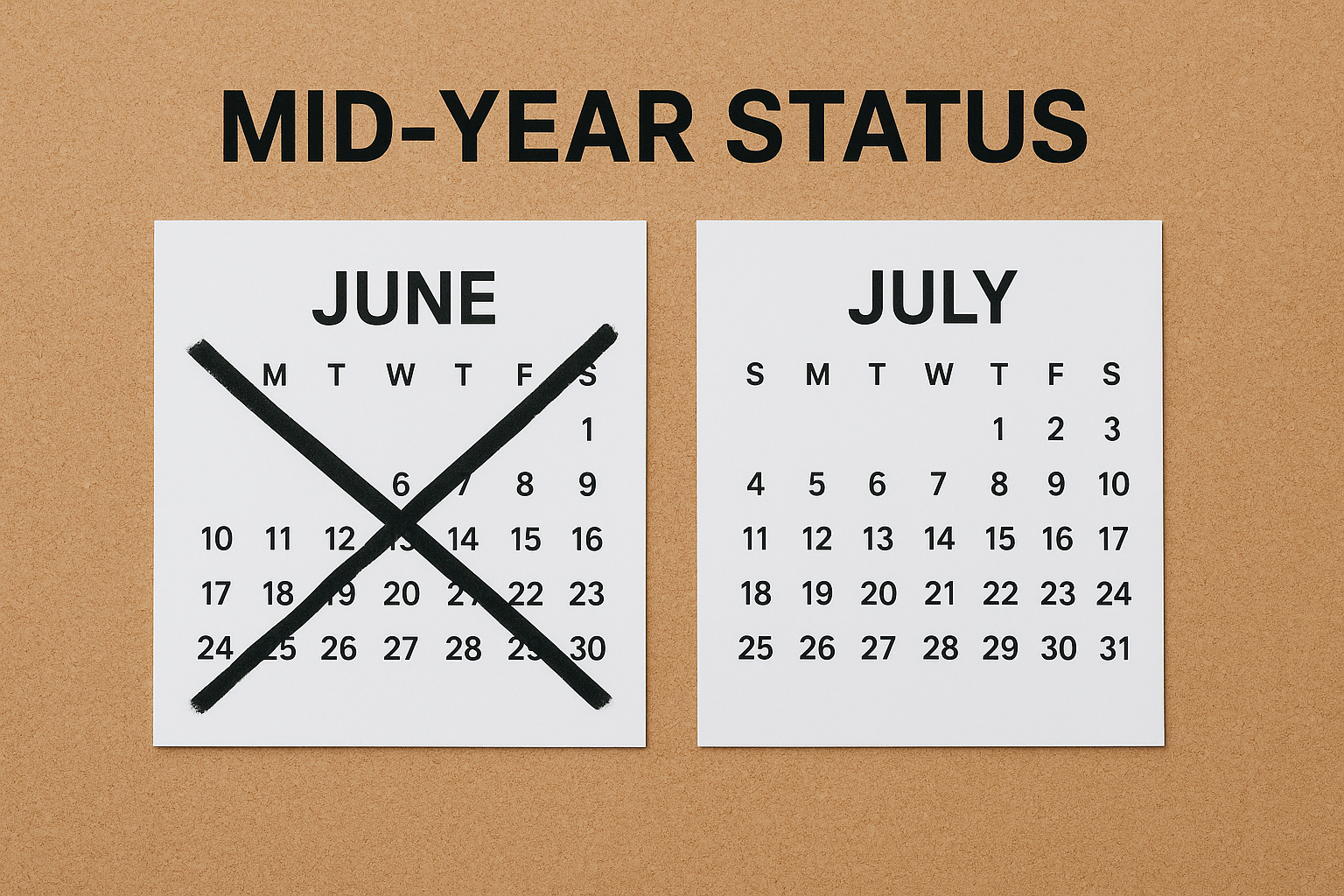
08/13/2025
Hedge Funds Are Back as Category Leads Private Fund Sales in H1
It’s August already. How did that happen?!
But before the schools go back, and we enter the home stretch of the year, we wanted to do a half-year check-in to see what the state of the market is in terms of capital raising in the US private funds industry so far in 2025.
That means Form D filings. And the headline is that the numbers are up.
The first half of last year saw 6,886 Form D filings submitted to the SEC between January 1st and June 30th, good for a total dollar value of $166.7bn.* Of those, 661 were hedge funds ($65bn), 1,926 were private equity funds ($40.1bn), 2,981 were venture capital funds ($12.9bn), and 1,318 were ‘other’ investment funds ($48.7bn).
But this year, 7,571 filings were submitted in H1, an increase of 10%; but the increase in the aggregate total amount sold - $222.5bn in the first half this year - represents a huge 33.5% uplift from last year’s $166.7bn.
It is a similar story at the category level. Table 1 below shows that, for the main pooled investment fund categories available to filers on the Form D, both the number of filings and the total sales were up year on year.
Table 1: Form D Filings, January – June, 2024, 2025
Category 2024 Count 2025 Count 2024 $ Amount 2025 $ Amount Hedge Fund 661 811 $ 64,958,087,260 $ 80,736,000,465 Other 1318 1366 $ 48,675,672,598 $ 58,976,698,187 Private Equity 1926 2220 $ 40,140,727,490 $ 64,305,778,248 Venture Capital 2981 3174 $ 12,910,465,197 $ 18,580,490,340 *We use the Total Amount Sold on Form D to estimate the amount raised in dollars.
Many have been commenting about the challenges that new hedge funds face to raise assets for years, but now, it appears that they are back, with the category delivering not only the highest total sales value in the first half of this year, but given the category also has the lowest number of filings on aggregate, the highest average size as well.
The numbers don’t paint the whole picture, either, because not every filer discloses their sales on the initial Form D.
Some funds file it proactively — for example, if the first subscription hasn't settled yet, or if they're setting everything up in anticipation of imminent fundraising. In these cases, they may list $0 sold or leave the sales data blank because they haven't received any subscriptions yet, so there's genuinely nothing to report.
But the cynic would say that optics play a significant role. If a fund launches, makes a few early sales, files a Form D showing a tiny amount raised — and then fails to raise more over the next year — that filing becomes a kind of public scarlet letter. It says, “We tried… and got nowhere.” And that's not a good look for a fund trying to build momentum or impress prospective investors.
So instead of putting “$1m raised,” they might just file early, leave the sales amount blank or at zero, and quietly update it later (or not at all) with an amended Form D once there’s a respectable number to show — or avoid updating it if the raise goes nowhere.
Anyway, despite the hedge fund category roaring back in the first half of 2025, it is the private markets folks which dominate the ‘league table’ of the largest filers. That should come as no surprise, as it usually takes a lot more money to buy a company than take a position in the stock market.
So, which firms or funds have been gobbling up the money so far this year? Table 2 below shows the dominance of the private equity and ‘other’ categories in the multi-billion-dollar market.
Table 2: Largest Form D Filings, Jan-June 2025, by Category and Total Amount Sold
Fund Name Category Total Amount Sold Graham Global Investment Fund II SPC LTD Hedge Fund $15.0bn Graham Global Investment Fund I SPC LTD Hedge Fund $10.8bn Atlas Capital Resources V LP Private Equity $6.3bn Founders Fund Growth III, LP Venture Capital $4.6bn Millennium Global Estate Series Interest of the SALI Multi-Series Fund, L.P. Hedge Fund $3.9bn Verde Alpha Fund, LTD. Hedge Fund $3.4bn Blackstone Capital Opportunities Feeder Fund V-R (CYM) LP Private Equity $3.3bn Golub Capital Insurance Fund Series Interests of the SALI Multi-Series Fund, L.P. Hedge Fund $2.4bn Graham Absolute Return Trading Ltd. Hedge Fund $2.4bn 3G Fund VI, L.P. Private Equity $2.3bn Reasons for the growth in the private fund market in the US can’t be derived from the data, but the three interest rate cuts by the US Fed between September and December last year likely have had a positive impact on new fund launches in the first half of this year, as investors rotate away from the ‘flavor-of-the-month of recent times’ liquid fixed income investments into alternatives.
But for those in the private funds market, a 10% increase in the total number of filings, and an increase in dollars allocated of one-third – remember, that’s a minimum one-third due to the zero sales reported in some instances – the numbers from the first six months of 2025 will be most encouraging.
Editor's Picks:
Here are a handful of articles that we’ve seen recently that we found interesting. Hopefully, you do, too!
- Private-Asset Boom Cools as Hedge Funds, Crypto Nab New Billions
- Leveraged loan default rate holds at 1.11% in July; distress ratio plumbs three-year low
- Private equity is coming to your 401(k). Are the rewards worth the risk?
- Real Estate Asset Selection Drove Performance
- Blockchain technology can help decentralize the US energy grid
-
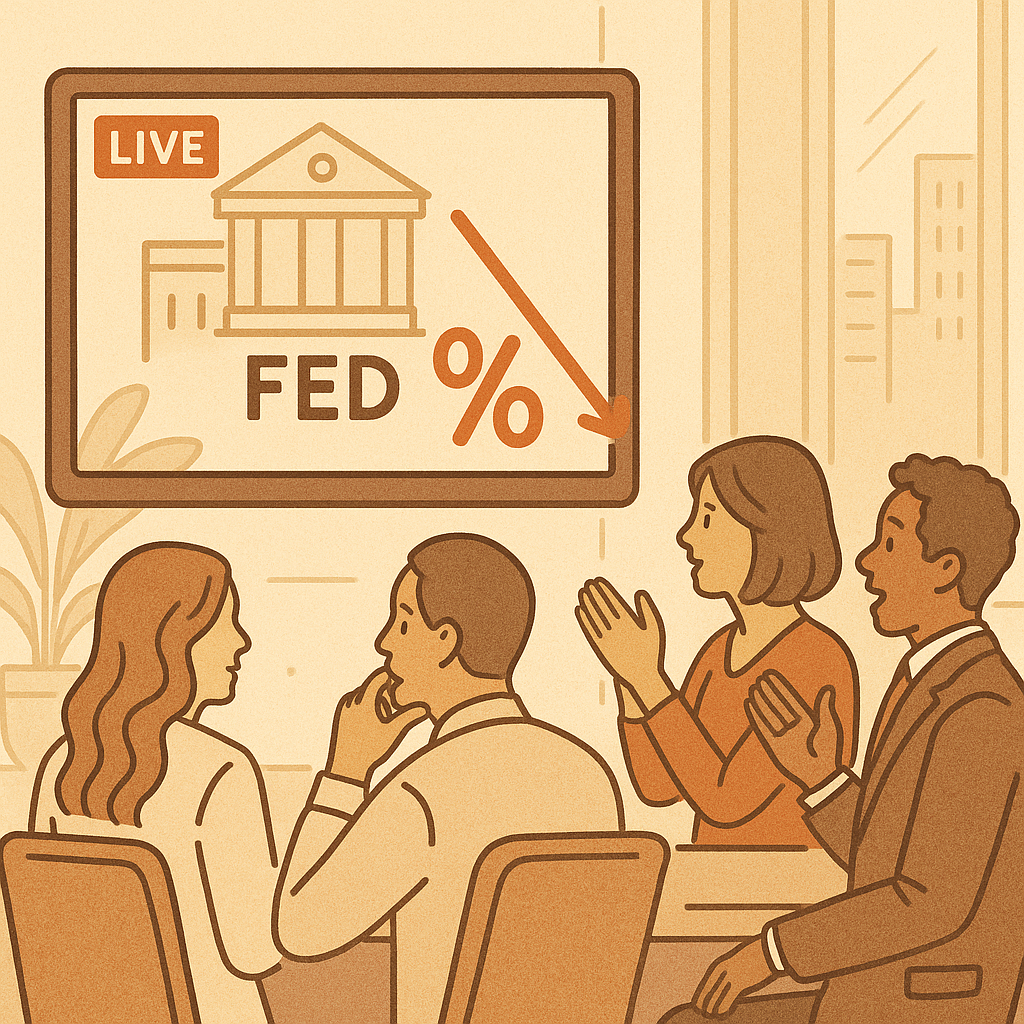
07/09/2025
Does the Alternative Investment Market Actually Need an Interest Rate Cut?
Here at 9AT we, obviously, would like to see the alternative investment industry thrive and grow.
So, the additional interest rate cuts that we, and many others that we talk to - whether we’re out and about at industry conferences, or just during the course of our working week – were hoping for at the beginning of the year, which should, other things being equal, support fundraising and deal activity, are yet to materialize.
Ignore the politics for a minute and let’s look at some of the data. The most recent jobs data published at the beginning of the month showed nonfarm payroll up by 147,000 in June, which is in line with the average monthly gain of 146,000 over the prior 12 months. And job data for April and May have been revised upwards since the original data was released for those months.
So, more Americans now have more money. That is not a recipe for lower rate expectations.
Next, inflation. While inflation rates have plateaued to around 3% - regularly less – since the middle of 2023, the rate has ticked up in the past couple of months which could give hawks more reason to resist President Trump’s calls for a 300 basis point cut.
Again, that is hardly a leading indicator for a rate cut.
But does the alternative investment industry need one? Hedge funds could well point to the first half of 2025 being good – the HFRI is up 3.77% year to date and 8.54% in the last 12 months. Part of the reason for the good performance so far could be market volatility, which is generally a tailwind for hedge funds (or is supposed to be). And the returns in the ZIRP environment of the post-GFC decade certainly weren’t amazing (on average).
And higher rates are a tailwind to certain private credit strategies as well. Many loans by private debt funds are floating rate, so the higher the interest rate, the higher the IRR (let’s ignore the higher risk of loans becoming non-performing for now).
And demand for private credit is set to continue, according to HSBC, to the tune of $3trn in the next three years. And McKinsey says that private markets generally are set to see greater allocations from limited partners in the coming year.
There is no doubt that lower rates support fundraising in alternatives as investors look for investments that can generate an acceptable yield. And lower rates support increased activity in private equity as the cost of financing deals falls.
But lower rates support zombie companies, whereas higher rates do not. And higher rates help to separate the great from the good in the sense that a higher-cost regime makes a private markets fund or a hedge fund really earn their fees by delivering good performance in a more challenging environment.
What happens with interest rates remains to be seen, of course. But from the conversations we have been having, we don’t think that the lack of a rate reduction so far this year has been a significant drag on the alternative investment industry.
Editor's Picks:
- Hedge funds seek to expand into private credit
- Private Credit Can Bring Risk Along With Liquidity to Commercial Property Finance
- Trump reportedly preparing order to open 401(k) plans to private market assets
- The Office Market Recovery is Here, Just Not Everywhere
- Why AI will eat McKinsey’s lunch — but not today
-
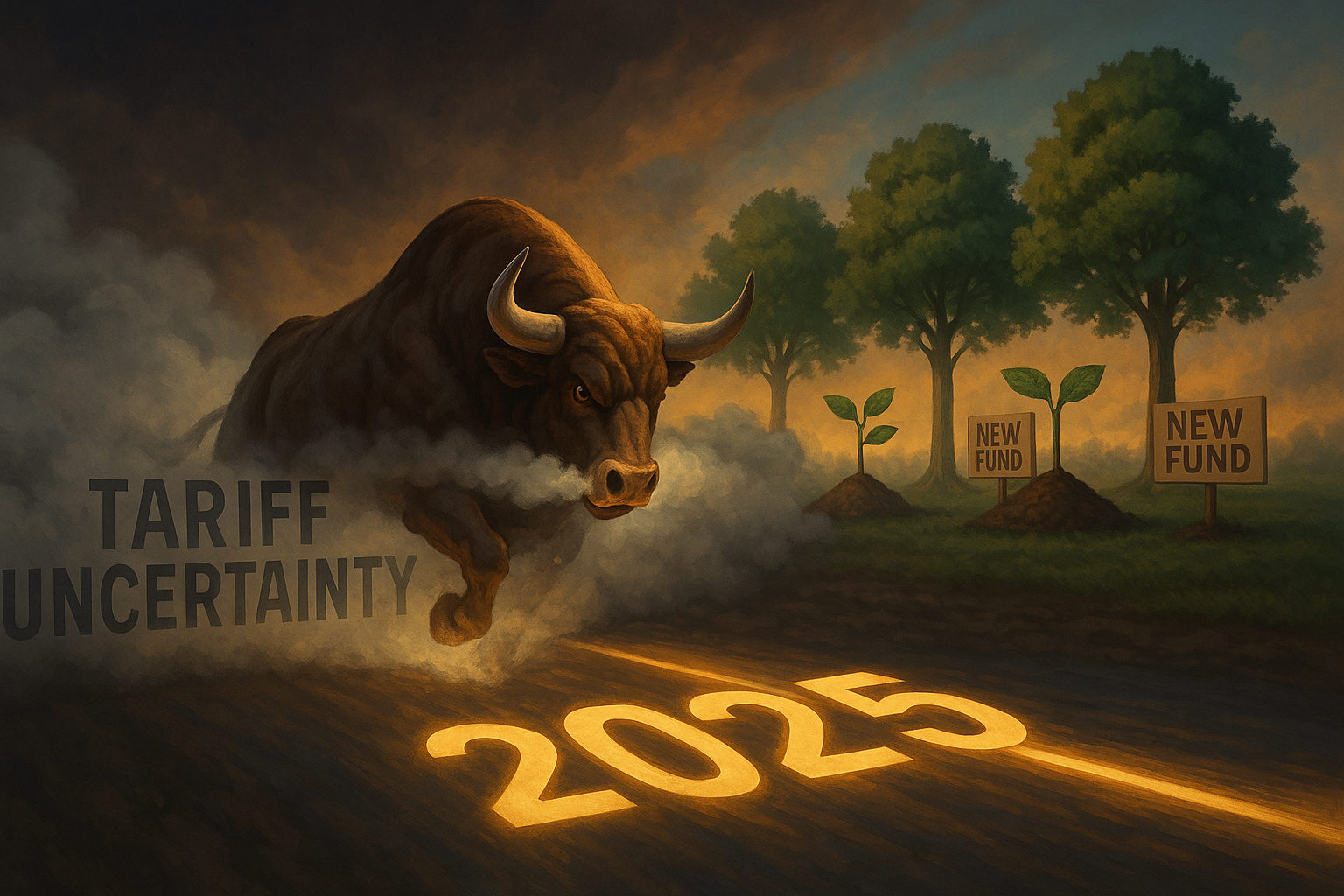
05/08/2025
New Fund Launches Strong in 2025 Thus Far Despite Tariff Uncertainty
Tariffs. It is probably the most uttered word in macroeconomic and government policy circles since the beginning of the year. And it was certainly a commonly searched word on the internet in April – Google Trends tells you how popular a certain term is during a certain time frame, and interest peaked in early April, when President Trump implemented a swath of them to varying degrees of intensity (the chart below shows the relative trend for a search term – the higher the peak, the more it was searched for in the selected time period).
Figure 1: Google Trends, “Tariffs” and “Tariff”, past 90 days
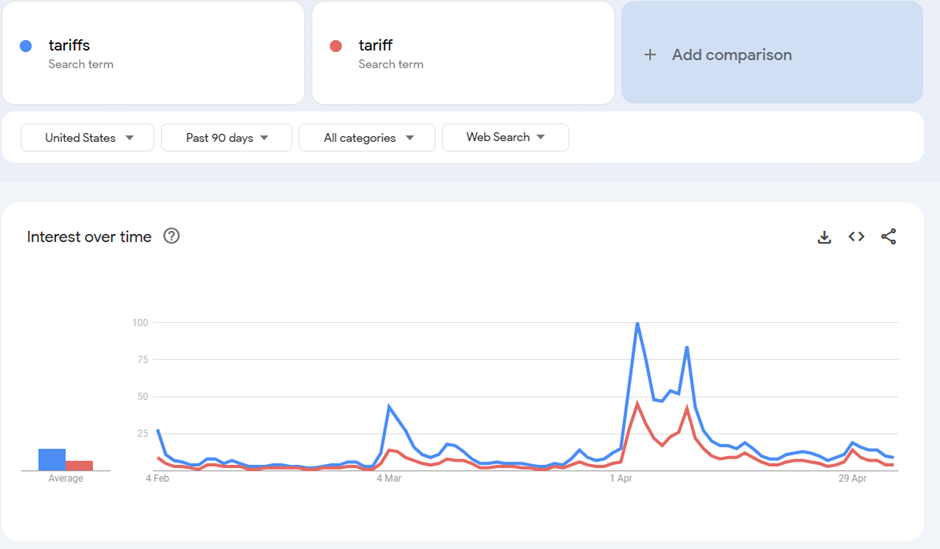
But what is the impact of the tariffs on the US private funds industry?
Well, there are a few ways to answer that question; one of which is to look at new fund launches.
According to the 9AT database, 4,333 new funds have been filed in the first four months of 2025, worth $80.9bn of capital under management at least – some funds file their Form D before the first allocations are made, so that number will only increase over time as they file their Form D/A in subsequent years. And notably, this year’s data represents a significant uplift over last year, when 2,604 new funds worth $38.4bn were filed – good for increases of 66.4% and 110.7% respectively.
This year’s data should be considered strong by any standard, but even more so when compared to the same period in 2024. And while it is not possible to know the extent of the impact of tariffs on investor demand for private fund strategies, given that many funds - especially in private equity, real estate and venture capital - are closed-ended, 10-year duration vehicles, investors take a longer view when they allocate to these products by definition, so it is still too early to understand how persistent the tariffs will be, and therefore, the extent of the impact of them on performance.
And it is performance which is the main determinant of future demand for a product. If something does well, investors want in, and vice versa.
And 2025 is certainly delivering interesting numbers in the hedge fund space. The HFRI 500 Fund Weighted Composite Index was down -3.77% year to date through the end of March (hedge funds as an overall sector follow the equity market as the bulk of the money is in equity-related strategies).
But then the S&P 500 notched its longest winning streak since November 2004 in late April, essentially covering the losses from the beginning to the middle of the month.
It is difficult to ascertain how the events of the first few months of the year will impact private market strategies, however.
For the new venture capital funds that have launched in the past few months, investors will already be expecting to be on the downward slope of the j-curve, so no surprises there – the question is whether the turning point becomes delayed or not.
Private equity could be more exposed, but it will be limited to a certain extent to those funds that have exposure to import industries, such as manufacturing and consumer goods & retail. Those funds with investments in software, professional services and finance are likely to be less affected.
It is a similar story in private credit, but the reduction in interest rates towards the back end of 2024 will have provided some buffer for borrowers as most of the loans in the space are floating rate.
One interesting observation in the public markets can be seen in the stock price performance of some of the listed alternative asset managers. At the time of writing, KKR was down -23.16% year to date, Blackstone down -22.28%, Apollo down -21.71%, Carlyle down -20.84%. Compare that to the S&P 500 SPDR ETF (down -4.65%) and these stocks have underperformed this year. There could be a few reasons for that – profit taking for one, as some of these stocks actually outperformed the S&P ETF on a rolling one-year basis. Concerns about the impact of tariffs on portfolio companies, whether private debt or equity, could be another.
Whatever the reason, the global economy would still seem to be in the early innings of the tariffs game, but encouraging signs came at the beginning of May, when the US reached out to China to discuss a possible trade deal (which itself likely helped lift the equity market) – buy the dip, anyone?
What the ultimate impact will be is anyone’s guess. But, at $80.9bn of capital allocated to private funds through April, it seems that some capital allocators have plenty of confidence that US private fund strategies can continue to deliver them the returns they need, even if the new funds are launching at a time of unprecedented macroeconomic change.
Editor's Picks:
- Blackstone's King of Hedge Funds on Alt Investing Right Now
- Leveraged loan default rate dips to 0.73%, but LMEs send dual-track gauge higher
- Private equity’s bind should prompt an investor rethink
- Signals on Private Real Estate amid Trade Turmoil
- VCs lambast visa barriers under second Trump administration

